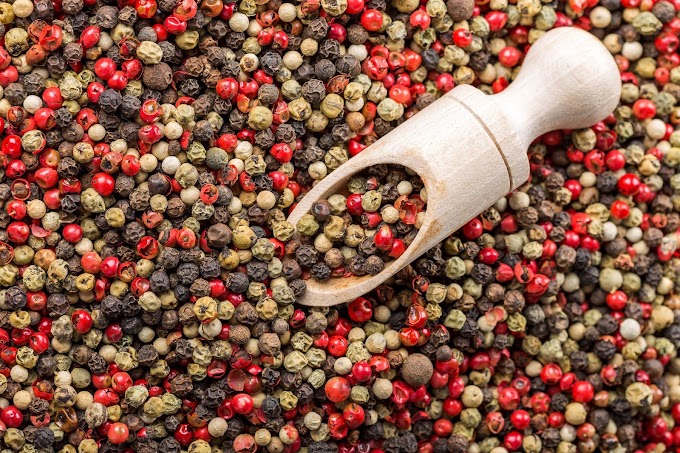 |
| Philodendron Melanochrysum: isn't that a gorgeous one? |
Philodendron melanochrysum is a tropical plant native to Ecuador and Colombia in South America. It belongs to the family Araceae and is known for its stunning, glossy, dark green leaves with deep purple undersides.
The plant is often called the "Black Gold Philodendron" or "Black Velvet Philodendron" due to its unique coloration and texture.
In its natural habitat, Philodendron melanochrysum can grow up to 20 feet tall and wide, making it an impressive specimen in any garden. However, when grown as a houseplant, it tends to stay smaller, reaching a height of around 3-4 feet.
It is a fast-growing plant and can be trained to climb using a trellis or left to trail over the edge of a pot or hanging basket.
Interested to know more about everything related to this gorgeous velvety plant? Stay with me as I am going to talk about everything you need to take care of the melano plant as a beginner. Let's get started!
Let's talk about the basics of the melano plant first
The plant is relatively easy to care for and can thrive in a wide range of lighting conditions, from low to bright indirect light. It prefers to be kept in a humid environment and will benefit from regular misting or being placed on a pebble tray.
It is also important to keep the soil evenly moist but not soggy, as the plant is prone to root rot if it is overwatered. Fertilize the plant every month during the growing season with a balanced liquid fertilizer. More about this is in a separate section below.
One of the unique characteristics of Philodendron melanochrysum is its ability to produce stunning, velvety black flowers. These flowers are produced on long, slender spadices that emerge from the base of the plant and can reach up to 3 feet in length. The flowers are followed by small, green berries that eventually turn yellow or orange as they mature.
In addition to its beautiful flowers and striking foliage, Philodendron melanochrysum is also prized for its air-purifying qualities. It is known to remove toxins such as formaldehyde, xylene, and toluene from the air, making it a great choice for indoor spaces.
Overall, Philodendron melanochrysum is a stunning, easy-to-care-for plant that is well-suited for any tropical or indoor garden.
With its unique, velvety black flowers and glossy, dark green leaves, it is sure to add a touch of drama and elegance to any space. Just be sure to keep it out of reach of children and pets, and take care to control any pests that may appear.
Taking care of your melano plant
 |
| Philodendron Melanochrysum: how about one for your home? |
Light:
Philodendron melanochrysum can tolerate a wide range of lighting conditions, from low to bright indirect light. It does best in bright, indirect light and will thrive in a room with east, west, or north-facing windows. Avoid placing the plant in direct sunlight, as this can scorch the leaves and cause them to yellow.
Soil:
Philodendron melanochrysum prefers a well-draining soil mix that is rich in organic matter. A good soil mix for this plant would be a combination of potting soil, perlite, and peat moss. Make sure the soil is evenly moist but not soggy, as the plant is prone to root rot if it is overwatered.
Fertilizer:
Philodendron melanochrysum benefits from regular fertilization during the growing season (spring through fall). Use a balanced liquid fertilizer and apply it every month according to the manufacturer's instructions. Avoid fertilizing the plant during the winter, as it is in a dormant period and does not require additional nutrients.
Propagation:
Philodendron melanochrysum can be propagated by stem cuttings or by dividing the plant at the root ball. To propagate by stem cuttings, cut a 4-6 inch piece of the stem just below a leaf node and remove the lower leaves. Place the cutting in a rooting hormone and plant it in a well-draining soil mix.
Keep the soil evenly moist and provide bright, indirect light. The cutting should root within a few weeks. To propagate by dividing the root ball, gently lift the plant from its pot and carefully separate the roots into smaller sections. Plant each section in a separate pot and water well.
Water:
It is important to keep the soil evenly moist but not soggy for Philodendron melanochrysum. Water the plant thoroughly, allowing the excess water to drain out of the pot, and then wait until the top inch of the soil has dried out before watering again.
The plant will benefit from regular misting or being placed on a pebble tray to increase humidity. Avoid letting the plant sit in standing water, as this can lead to root rot.
How to safeguard your melano plant from pests?
 |
| Philodendron Melanochrysum: do you already have one? Please comment below, thanks! |
Just like any other houseplant, your melano plant is prone to pests such as aphids and mealybugs. Here are some tips for safeguarding your Philodendron melanochrysum from pests:
Keep the plant healthy:
A healthy plant is less prone to pest infestations. Make sure to provide the plant with proper care, including the right amount of light, water, and fertilization.
Inspect the plant regularly:
Regularly inspecting the plant can help you catch any pest infestations early on before they become a major problem. Look for signs of pests such as small, sticky honeydew deposits or white, cottony masses on the leaves and stems.
Use natural pest control methods:
There are several natural pest control methods you can use to keep pests at bay. For example, you can use neem oil or horticultural oil to repel or kill aphids and mealybugs. You can also try using a mixture of water and dish soap to control these pests.
Remove infested leaves:
If you find that a few leaves are heavily infested, it may be best to remove them to prevent the pests from spreading to the rest of the plant.
Use chemical pest control:
If natural pest control methods are not effective, you may need to use a chemical pest control product. Make sure to follow the instructions on the product carefully and only use it as directed.
Overall, the best way to safeguard your Philodendron melanochrysum from pests is to keep the plant healthy and inspect it regularly. If you do notice any pests, act quickly to control them before they become a major problem.
FAQs Regarding The Melano Plant
Is Philodendron melanochrysum easy to care for?
Philodendron melanochrysum is a relatively easy-to-care-for plant that can thrive in a wide range of lighting conditions and soil types. It is a fast-growing, tropical plant that is well-suited for indoor or outdoor gardens.
With proper care and attention, it will bring joy to your home or garden for many years to come. Just be sure to keep it out of reach of children and pets, as it is toxic if ingested, and take care to control any pests that may appear.
Should I mist my Melanochrysum?
Misting your Philodendron melanochrysum can be beneficial for the plant, as it helps to increase humidity and mimic the plant's natural habitat. Philodendron melanochrysum is native to tropical regions where the air is often humid, and it can benefit from regular misting to help maintain optimal humidity levels.
To mist your Melanochrysum, simply fill a spray bottle with clean water and mist the leaves of the plant lightly. Avoid over-misting, as this can lead to leaf rot. Instead, mist the plant once or twice a week, or as needed to maintain optimal humidity levels.
In addition to misting, you can also place the plant on a pebble tray filled with water and stones to increase humidity. This helps to create a humid microclimate around the plant, which can be especially beneficial during the dry winter months.
Overall, misting your Philodendron melanochrysum can be a helpful way to maintain optimal humidity levels and help the plant thrive. Just be sure to avoid over-misting, as this can lead to problems such as leaf rot.
Is Philodendron melanochrysum rare?
Yes, it's a rare plant. That's the reason you generally don't find them in your nearby nurseries. However, you can check them on Amazon as well as Comfort Plants.
How big do Philodendron melanochrysum grow?
Philodendron melanochrysum is a fast-growing plant that can grow up to 20 feet tall and wide in its natural habitat. However, when grown as a houseplant, it tends to stay smaller, reaching a height of around 3-4 feet.
The size of the plant will depend on a variety of factors, including the size of the pot, the amount of light it receives, and the care it receives.
To encourage your Philodendron melanochrysum to grow to its full potential, provide it with the right amount of light, water, and fertilization. Make sure to use a well-draining soil mix and a pot that is large enough to accommodate the plant's roots. You can also train the plant to climb using a trellis or allow it to trail over the edge of a pot or hanging basket.
What is the difference between Melanochrysum and Micans?
Philodendron melanochrysum and Philodendron micans are both tropical plants that belong to the family Araceae. However, there are several key differences between these two plants.
One of the main differences between Melanochrysum and Micans is the color and texture of their leaves. Melanochrysum is known for its glossy, dark green leaves with deep purple undersides, while Micans has velvety, burgundy-colored leaves. Both plants are prized for their unique and attractive foliage.
Another difference between these two plants is their growth habit. Melanochrysum is a fast-growing plant that can reach a height of up to 20 feet in its natural habitat, while Micans is a slower-growing plant that tends to stay smaller, reaching a height of around 3-4 feet.
In terms of care, both Melanochrysum and Micans are relatively easy to care for and can thrive in a wide range of lighting conditions. However, Micans are more sensitive to extreme temperatures and may need to be protected from drafts and cold temperatures.
Both plants prefer to be kept in a humid environment and will benefit from regular misting or being placed on a pebble tray.
What is the difference between philodendron gigas and Melanochrysum?
Philodendron Gigas and Philodendron melanochrysum are both tropical plants that belong to the family Araceae. However, there are several key differences between these two plants.
One of the main differences between gigas and melanochrysum is the size and growth habits of the plants. Philodendron gigas is a large, fast-growing plant that can reach a height of up to 10 feet, while Philodendron melanochrysum is a smaller, slower-growing plant that tends to stay smaller, reaching a height of around 3-4 feet.
Another difference between these two plants is the color and texture of their leaves. Philodendron gigas have large, glossy, dark green leaves with deeply lobed edges, while Philodendron melanochrysum has glossy, dark green leaves with deep purple undersides. Both plants are known for their striking foliage.
In terms of care, both gigas and melanochrysum are relatively easy to care for and can thrive in a wide range of lighting conditions. However, gigas is more sensitive to extreme temperatures and may need to be protected from drafts and cold temperatures.
Both plants prefer to be kept in a humid environment and will benefit from regular misting or being placed on a pebble tray.
Is Melanochrysum a hybrid?
There is some debate about the exact origin of Philodendron melanochrysum. Some sources suggest that it is a natural hybrid, while others claim that it is a naturally occurring species.
Philodendron melanochrysum is native to Ecuador and Colombia in South America, where it is found growing in the wild. It is thought to be a hybrid of two other Philodendron species, namely Philodendron sp. "Cocoa" and Philodendron sp. "Imperial Red." The plant is known for its unique, glossy, dark green leaves with deep purple undersides, which are thought to be the result of this hybridization.
Is Philodendron Melanochrysum toxic for pets?
Yes, Philodendron melanochrysum is toxic to pets if ingested. The plant contains calcium oxalate crystals, which can cause irritation and swelling of the mouth and throat if ingested. In severe cases, ingestion of the plant can lead to difficulty breathing and may require medical attention.
If you have Philodendron melanochrysum in your home and you have pets, it is important to keep the plant out of reach of your pets. This may involve placing the plant on a high shelf or in a room that is not easily accessible to your pets. If you suspect that your pet has ingested any part of the plant, contact your veterinarian for treatment.
From where can I buy the melano plant?
As mentioned above, the melano plant is not a commonly available plant. In fact, it's quite exotic and rare. If it's convenient, you can check the availability in your nearby nursery or order them online on Amazon. If not available on Amazon, you can also order online on Comfort Plants.










